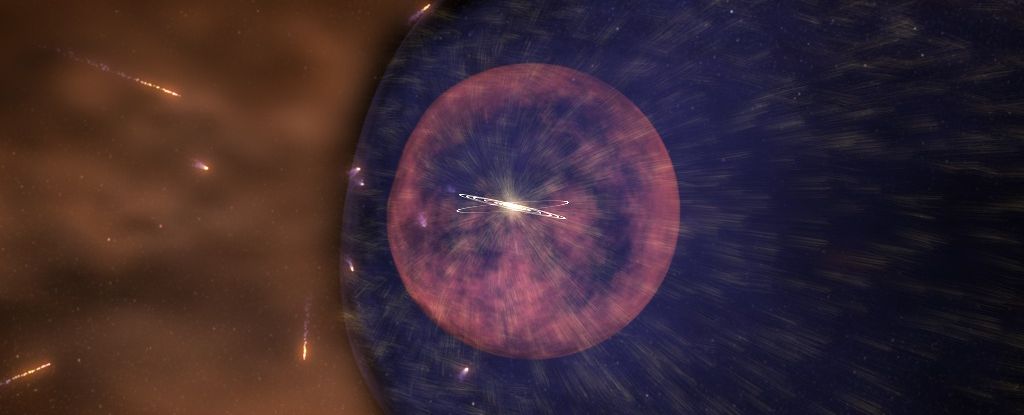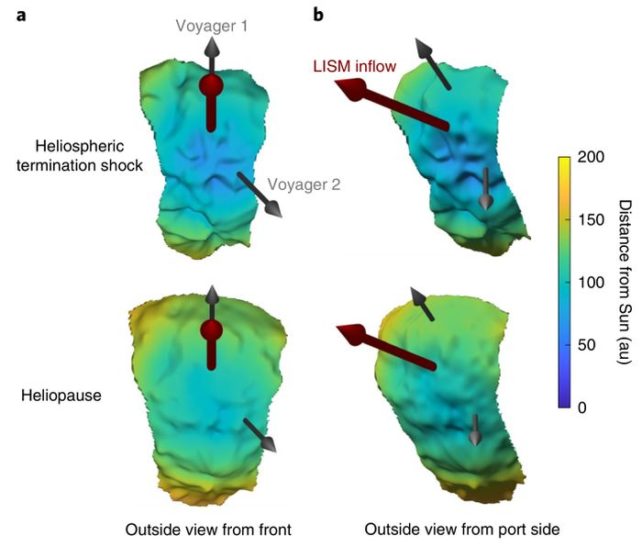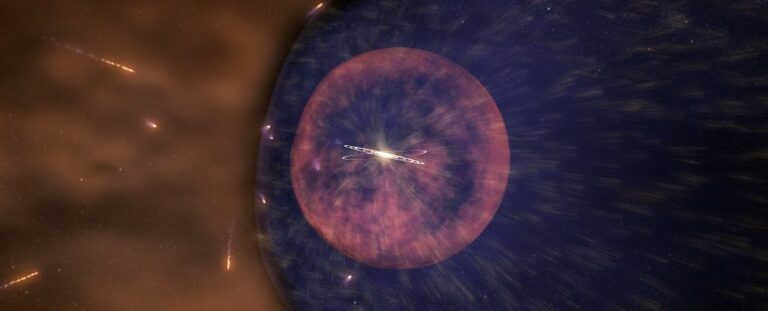Strange Ripples Have Been Found near the Solar System’s Edge
It’s possible that the space bubble enclosing the Solar System is occasionally wrinkly.
The termination shock and heliopause, which are moving areas of space that serve as one of the barriers between the Solar System and what is outside, interstellar space, have been shown to have ripple patterns by data from a spacecraft circling Earth.
The findings demonstrate that a thorough understanding of the Solar System’s periphery and how it evolves throughout time is attainable.

This knowledge will advance our understanding of the heliosphere, an area of space that extends from the Sun and protects the planets of our Solar System from cosmic radiation.
The Sun has many different effects on the area around it. The solar wind, a continuous supersonic flow of ionized plasma, is one of them. In the end, it fizzles out in the vast space between the stars after blowing out past the planets and the Kuiper Belt.
The heliopause is the point at which this flow ceases to be powerful enough to push back against the extremely tiny pressure of interstellar space. The termination shock is the point at which this flow slows down below the speed at which sound waves can travel through the diffuse interstallar medium.
The two Voyager probes are now essentially traveling across interstellar space after crossing the heliopause, giving us the first in-situ observations of this morphing barrier. The NASA Interstellar Boundary Explorer, however, is a different instrument that has been operating in Earth orbit since 2009 and has been assisting scientists in their mapping of the heliopause (IBEX).
IBEX monitors energetic neutral atoms, which are produced at the Solar System border when the solar wind from the Sun and the interstellar wind contact. While some of those atoms are sent deeper into space, others are hurled back toward Earth. Similar to cosmic echolocation, energetic neutral particles that return to us can be used to map the form of the boundary after the power of the solar wind that created them is taken into consideration.
The barrier was smoothed in both space and time in previous maps of the heliosphere’s structure because they used long-scale measurements of the development of solar wind pressure and energetic neutral atom emissions. But in 2014, the dynamic pressure of the solar wind rose by almost 50% during a period of about six months.
In order to get a more precise picture of the form of the termination shock and heliopause, a team of scientists led by Princeton University astronomer Eric Zirnstein exploited this shorter-scale event. They discovered enormous ripples, on the range of tens of astronomical units (one astronomical unit is the average distance between Earth and the Sun).

To understand how this high-pressure wind interacted with the Solar System boundary, they also ran simulations and models. The inner heliosheath, which is the area between the termination shock and the heliopause, was subjected to pressure when the pressure front reached the termination shock in 2015, according to their findings.
The inner heliosheath is filled with an intense storm of neutral atoms by the time the reflected wave returns to the termination shock from the heliopause and collides with the still-incoming flow of charged plasma behind the pressure front.
The distance to the heliopause has changed quite a little, according to the team’s measurements. 2012 saw the passage of Voyager 1 through the heliopause at a distance of 122 astronomical units. In 2016, the researchers calculated the distance to the heliopause in Voyager 1’s direction to be around 131 astronomical units. At the time, the probe was still in interstellar space and 136 astronomical units from the sun, but it was also trailed by a heliosphere that was expanding.
A margin of error of 8 astronomical units on either side, the team’s measurement to the heliopause in the direction of Voyager 2 in 2015 is a bit more challenging: 103 astronomical units. Voyager 2 was at that moment 109 astronomical units away from the Sun, which is still within the margin of error. It took until 2018 for it to travel 119 astronomical units over the heliopause.
Both data point to a considerable shift in the heliopause’s geometry. The reason is not totally evident.
A new spacecraft will be launched in 2025 to more accurately and across a larger energy range monitor energetic neutral atom emission. That, according to the scientists, should assist to clarify some puzzling issues about the peculiar, unseen, “wrinkly” bubble that shields our small planetary system from the weirdness of space.
Source: ScienceAlert
Do not forget to share your opinion with us to provide you with the best posts !




0 Comments